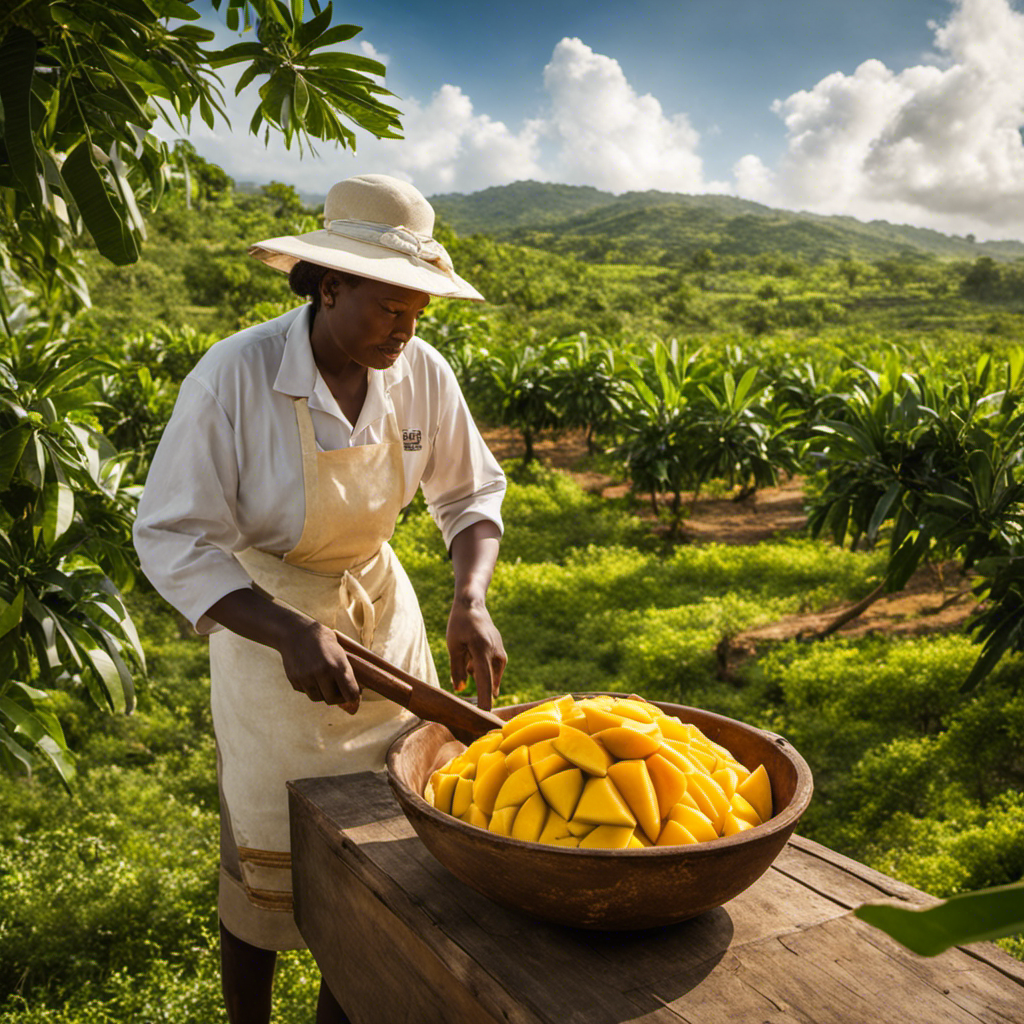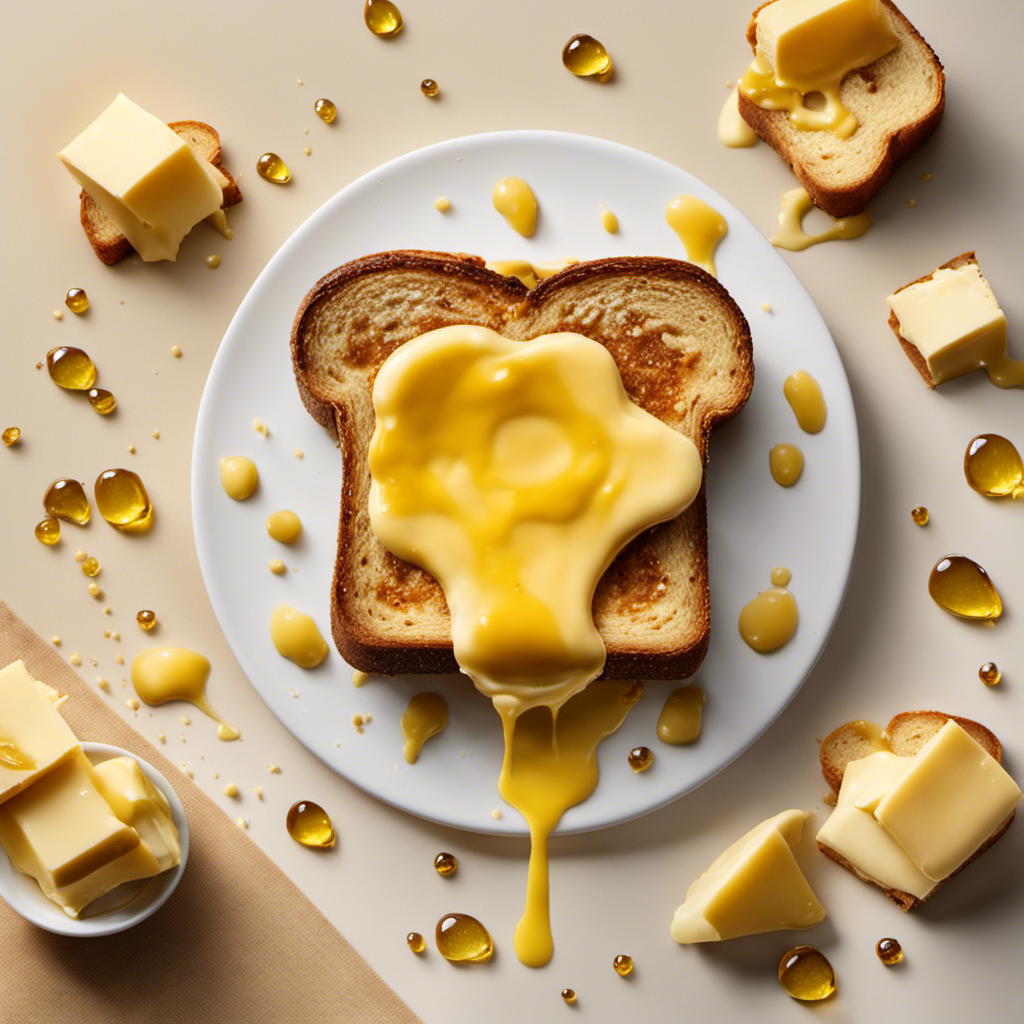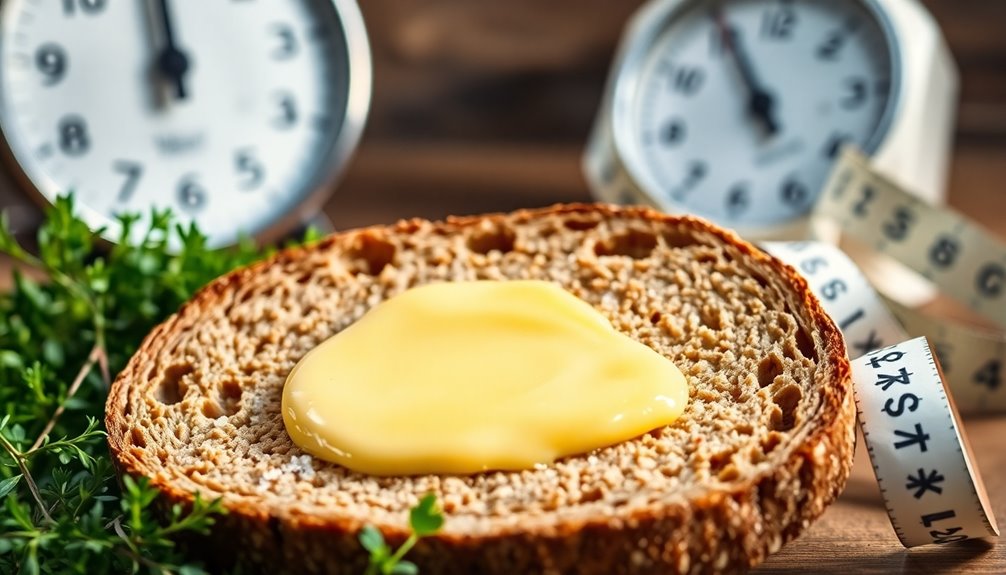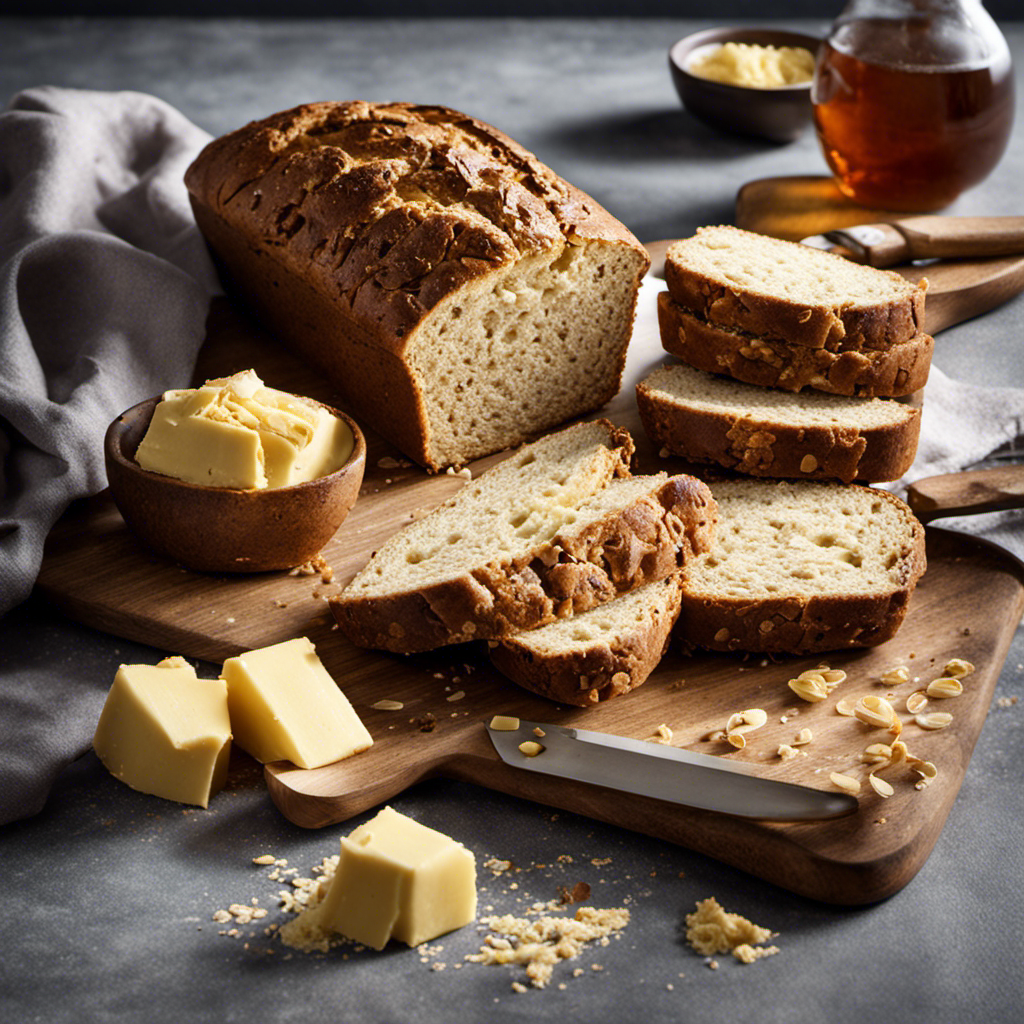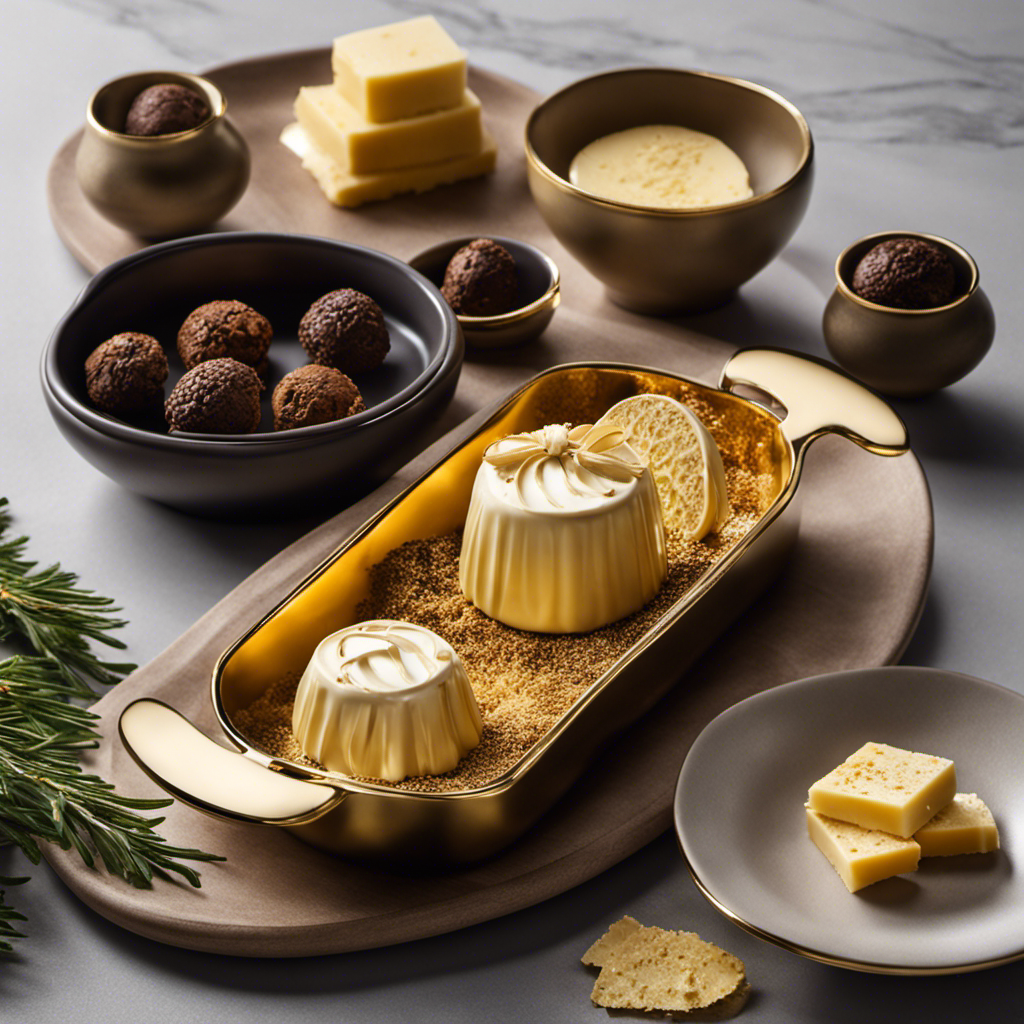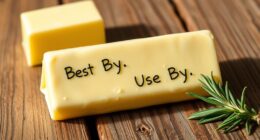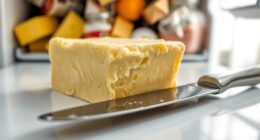Are you interested in learning about how smooth and hydrating mango butter is made? You’re in the right place! This article will walk you through the fascinating steps of creating mango butter.
From carefully selecting the ripest mangoes to extracting the golden goodness from their juicy pulp, every step is meticulously executed to ensure the highest quality.
So sit back, relax, and prepare to delve into the captivating world of mango butter production.
Key Takeaways
- Mango butter is made by extracting butter from the seeds of ripe mangoes.
- The quality of the mangoes used greatly affects the flavor and texture of the butter.
- Mango butter can be refined or processed to improve its texture and scent.
- The production process involves steps such as washing, drying, crushing, roasting, and pressing the seeds to release the butter.
The Origin of Mango Butter
Mango butter is believed to have originated in India. The mango butter production process involves several manufacturing techniques that extract the rich and creamy butter from the fruit’s seeds.
First, ripe mangoes are collected and the seeds are extracted. These seeds are then washed and dried to remove any impurities. Next, the seeds are crushed to obtain the mango kernel, which is rich in fatty acids. The kernels are then roasted and pressed to release the mango butter. This process ensures that the butter retains its natural properties and beneficial nutrients.
Once the mango butter is obtained, it can be further refined or processed to improve its texture and scent. Selecting the right mangoes for butter production is crucial in determining the quality and aroma of the final product.
Selecting the Right Mangoes for Butter Production
When it comes to making mango butter, the quality of the mangoes you select is crucial. To ensure optimal mango selection, there are several key points to consider.
First, you want to choose mangoes that are fully ripe but not overripe, as this will ensure the best flavor and texture for your butter.
Additionally, the mangoes should be free from any blemishes or signs of spoilage.
Mango Quality for Butter
To make high-quality mango butter, it’s important to carefully select ripe and juicy mangoes. The quality of the mangoes used in butter production greatly affects the final product.
When selecting mangoes for butter production, choose those that are fully ripe and have a vibrant color. Ripe mangoes are softer to the touch and have a sweet aroma. Avoid mangoes that are overly soft, bruised, or have blemishes. These may affect the texture and taste of the butter.
Mangoes with a higher sugar content will yield a richer and more flavorful butter. It’s also important to choose mangoes with a high moisture content, as this will result in a smoother and creamier texture.
Optimal Mango Selection
You should carefully select ripe and juicy mangoes to ensure the optimal quality of your mango butter. When choosing mangoes, look for ones that have a vibrant color and a slight give when gently squeezed. These indicators suggest that the mangoes are ripe and ready to be used for making mango butter. It is important to note that the quality of the mangoes will directly affect the properties of the final product. To help you understand the significance of mango selection, here is a table outlining the properties of mango butter based on the type of mango used:
| Type of Mango | Properties of Mango Butter |
|---|---|
| Ripe | Creamy texture, sweet aroma |
| Overripe | Intense mango flavor, softer texture |
| Underripe | Less fragrant, firmer texture |
Choosing Ripe Mangoes
If you’re looking for a ripe mango, check for vibrant color and a slight give when gently squeezed. Follow these three tips to ensure you choose the perfect mango for your needs:
-
Look for vibrant color: A ripe mango will have a rich, vibrant color, ranging from yellow to red depending on the variety. Avoid mangos with green or brown patches as they indicate under-ripeness or over-ripeness.
-
Feel for a slight give: Gently squeeze the mango to check for ripeness. A ripe mango should have a slight give when pressed, indicating that it is soft and juicy.
-
Smell the stem end: Bring the stem end of the mango close to your nose and take a whiff. A fragrant, sweet aroma indicates that the mango is ripe and ready to be enjoyed.
Once you’ve chosen a perfectly ripe mango, you can explore various mango butter recipes and incorporate mango butter into your skincare routine for its moisturizing and nourishing properties.
Harvesting and Preparing Mangoes for Butter Extraction
Once the mangoes are fully ripe, it’s time to start the process of harvesting and preparing them for butter extraction. Harvesting techniques play a crucial role in obtaining high-quality mango butter.
It is recommended to carefully select mangoes that have reached their peak ripeness, as this ensures the best flavor and aroma. When harvesting, gently twist the mangoes to detach them from the tree, being careful not to damage the fruit.
After harvesting, the mangoes should be washed and dried thoroughly to remove any dirt or debris. Once clean, the mangoes are ready for the butter extraction process.
Mango butter, derived from the seeds of the fruit, is known for its creamy texture and moisturizing properties. It contains essential fatty acids and antioxidants, making it a valuable ingredient in skincare products.
The Extraction Process: From Pulp to Butter
When it comes to extracting butter from mangoes, there are two key points to consider: the transition from pulp to cream and the different extraction methods.
The process begins with the transformation of the mango pulp into a creamy consistency, which is essential for the extraction of the butter.
Various methods can be used to separate the butter from the cream, such as mechanical extraction or solvent extraction, each with its own advantages and disadvantages.
Pulp to Cream Transition
To transition the pulp into cream, you’ll need to blend it until it becomes smooth and creamy. This step is crucial in the production of mango butter, as it helps achieve the desired consistency and texture.
Here are three key factors to consider when transitioning the pulp:
-
Blending time: The duration of blending affects the final consistency of the cream. It is important to blend the pulp for a sufficient amount of time to break down any lumps and achieve a smooth texture.
-
Mixing speed: The speed at which you blend the pulp can also impact the cream production. Starting at a lower speed and gradually increasing it can help ensure even blending and prevent any splattering.
-
Additives: Some recipes may call for the addition of certain ingredients like oils or butters to enhance the creaminess and richness of the final product. These additives can further improve the texture and overall quality of the mango butter cream.
Butter Extraction Methods
If you’re looking for alternatives to traditional butter extraction methods, consider exploring cold-pressing or solvent extraction.
Cold-pressing is a method that involves applying mechanical pressure to the mango pulp to extract the butter. This technique is popular because it does not involve the use of heat or chemicals, which can potentially alter the properties of the butter.
Solvent extraction, on the other hand, involves using a solvent like hexane to dissolve the butter from the pulp. This method is efficient in extracting a high yield of butter, but it requires careful purification to remove any residual solvent.
Regardless of the method used, mango butter is known for its high content of fatty acids and antioxidants, making it a valuable ingredient in skincare products.
Transitioning into the subsequent section, let’s now discuss the purification and clarification of mango butter.
Purification and Clarification of Mango Butter
The purification and clarification process of mango butter involves filtering out impurities and removing any remaining solids. To ensure the highest quality and purity, various purification techniques are employed.
Here are three key steps involved in the purification and clarification process of mango butter:
-
Filtration: The initial step involves passing the mango butter through a fine mesh filter to remove any large particles or debris. This helps to eliminate any physical impurities and ensures a smoother texture.
-
Centrifugation: Next, the mango butter is subjected to centrifugal force, which separates the lighter components, such as water and other impurities, from the denser butter. This technique is effective in removing any remaining solids and impurities.
-
Decolorization: To enhance the appearance of mango butter, a decolorization step is often employed. This involves the use of activated carbon or other adsorbents to remove any pigments or discoloration, resulting in a visually appealing final product.
Overall, these purification techniques help to improve the quality and properties of mango butter, making it suitable for various applications in skincare, cosmetics, and culinary industries.
Refining and Packaging Mango Butter
Once you have completed the refining process, it’s important to carefully package your mango butter to maintain its quality and freshness. Refining techniques such as filtration and centrifugation remove impurities, resulting in a pure and smooth mango butter.
Now, it’s time to ensure that all your hard work is preserved. When it comes to packaging materials, consider using airtight containers made of glass or high-density polyethylene (HDPE) plastic. These materials help to prevent oxidation and moisture absorption, which can cause the butter to deteriorate.
Make sure the containers are clean and dry before transferring the mango butter. Additionally, labeling the packages with the date of production and expiration can help you keep track of its shelf life.
Uses and Benefits of Mango Butter
To maximize the benefits of your mango butter, try incorporating it into your skincare routine as a moisturizer or lip balm. Mango butter is rich in vitamins A and E, which help promote healthy skin and improve overall skin tone. It also contains essential fatty acids that provide deep hydration, making it a great natural alternative to chemical-laden moisturizers.
Here are three ways you can use mango butter in your skincare and haircare routine:
-
Use it as a facial moisturizer: Apply a small amount of mango butter to your face and neck after cleansing to lock in moisture and keep your skin soft and supple.
-
Use it as a lip balm: Mango butter is perfect for soothing dry, chapped lips. Apply a thin layer of mango butter to your lips throughout the day to keep them moisturized and protected.
-
Use it as a hair conditioner: Massage mango butter into your hair and leave it on for a few minutes before rinsing for soft, shiny, and nourished hair.
Mango butter is a versatile and effective ingredient that can benefit your skincare and haircare routine in multiple ways.
Conclusion
Congratulations! You’ve learned all about how mango butter is made. From the origin of mango butter to the selection of the perfect mangoes, the process is truly fascinating.
Harvesting and preparing the mangoes is followed by the extraction process, where the pulp is transformed into butter. Purification and clarification ensure the butter is of the highest quality. After that, it is refined and packaged for use.
Mango butter has numerous uses and benefits, making it a valuable ingredient in skincare and cosmetic products.
Enjoy incorporating this natural wonder into your daily routine!
